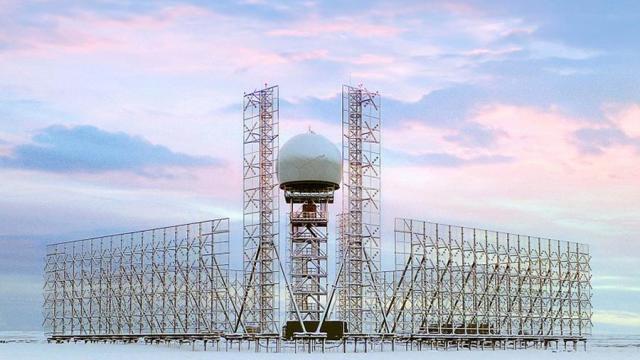Two more radars will go on combat duty in the Arctic until the end of 2021
MOSCOW, April 14. /TASS/. The Resonant-N hypersonic target detection radar (RLS) will go on combat duty in the Novaya Zemlya archipelago no later than June 2021. This was reported to TASS by the General Director of the research Center (SIC) "Resonance" Alexander Shramchenko.
"The third station" Resonance-N "will be put on combat duty on Novaya Zemlya in May-June of this year," he said.
According to him, this will happen due to the fact that "through the efforts of the Air Defense Command of the Aerospace Forces of the Russian Federation and the leadership of the SIC "Resonance", the radar "Resonance-N" on Novaya Zemlya was introduced into the staff of the radio engineering troops of the 45th Army of the Air Force and the Air defense of the Northern Fleet."
In addition, Shramchenko continued, this was due to the completed selection of personnel of the station's combat crew and the help of specialists of the SIC "Resonance" in its preparation for taking up combat duty.
Combat duty in the Arctic
The fourth and fifth hypersonic target detection radars "Resonance-N" will be put on combat duty in the Arctic until the end of 2021, said Shramchenko.
"By the end of this year, it is planned to put into operation two more Resonant-N radars in the Arctic zone-in Gremikha and in Zapolyarny," he said.
Shramchenko emphasized that the station deployed in Zapolyarnoye, 30 km from the Russian-Norwegian border, " will allow for round-the-clock control of the airspace over the northern territories of Norway and Finland."
The first and second stations of this type have been successfully on combat duty for several years in the areas of the settlements of Shoina (Kanin Nos Peninsula) and Indiga (400 km to the east). The third one was deployed to Novaya Zemlya at the end of 2019, and it will soon go on combat duty.
The "Resonance-N" radar operates in the meter range and uses the principle of wave resonance, which makes it possible to detect aircraft made using stealth technologies, as well as hypersonic targets flying at up to 20 speeds of sound. The radar is capable of detecting and issuing target designations for aerodynamic air targets at a range of 600 km, for ballistic targets - at a range of up to 1200 km, at an altitude of up to 100 km.

